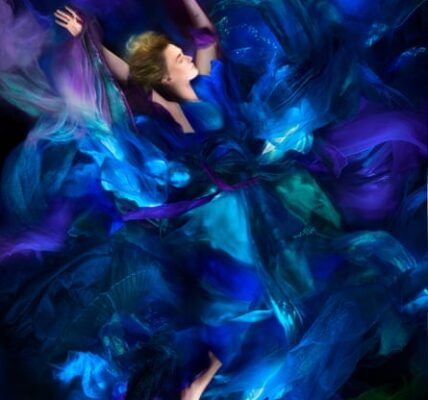Camden review – Dua Lipa’s TV show is less informative than a five-minute Google

Close your eyes and think of Camden, the rowdy, gaudy north London neighbourhood known for its old-school boozers, perpetual congregation of punks and surplus of tourist-trap tat. Now, which musical artists can you hear amid the hubbub? Cheeky-chappy two-toners Madness, whose Dublin Castle residency made them synonymous with the area? Grotbag indie revivalists the Libertines, who staged notoriously raucous early gigs in their Camden basement flat? How about robotically slick, fiercely business-minded dance-pop doyenne Dua Lipa?
Presumably not the latter – but with her first foray into TV, Lipa is hoping to remedy that. Camden, a four-part documentary series about the area’s outsized musical influence, is co-produced by the pop star and enlists some big names (Noel Gallagher, Chuck D, Boy George) to reminisce about their Camden connections while folding Lipa’s own origin-story into the mix. It was while living there as a teenager that she began recording the YouTube covers that eventually got her noticed by the industry, a fact she relays with the slightly unsettling cheesy smile that accompanies all her contributions to this series. Admittedly, she wasn’t exactly enmeshed in the local scene, but she did draw inspiration from the “non-conforming energy” of the place, observing that “there is something in the air in Camden that gives you courage to give it a go”.
If that sounds frustratingly vague, then strap in for another three hours of similar scrabbling around, as world famous musicians attempt to articulate the thing that makes Camden so Camden-ish. Some do it with style: Carl Barât calls it a “mecca for misfits”. Others don’t: Chris Martin says the place is “so full of life and vibes”. It reminds Yungblud of Balamory, for some reason, but it also “provides the truth – that’s the point of this fucking place”. The precise nature of that “truth” being so obvious to all cool mavericks that it requires no further explanation.
Yet we do need something a little more substantial than just a thousand variations on the claim that in Camden “you can be anyone you want to be” (Lipa, grinning toothily). What exactly is it that makes the area “such a judgment-free zone” (in the words of Little Simz)? Rather than unpicking or contextualising these platitudes, Camden irritatingly allows them to pile up. We’re told that many musicians have found a home and audience in Camden, largely because it has an unusually high concentration of gig venues, plus a self-fulfilling reputation for being countercultural. Yet we never hear why there are so many venues, or what the roots of that subversive aura are. Bizarrely, the series barely mentions punk, the genre that did so much to establish Camden’s alternative bona fides.
That could be because no old punks were willing to board Lipa’s Disney+ train – and Camden is told almost entirely through the medium of its celebrity talking heads. Aside from Suggs – who does provide insight into Camden’s permissive past (its poverty made it a home for society’s dropouts, plus there was a large Irish population who were partial to “a drink”) – these interviewees mostly relate their own personal impressions of Camden, which are occasionally entertaining when coming from characters such as Gallagher, but often end up feeling repetitive and shallow (essentially: it was cool and, God forbid, not Chiswick, where Noel was originally put up by his label). This means the series heavily supplements its regionally specific anecdotes with potted biographies of the various acts involved, which seems somewhat besides the point.
As an oral history of the area, Camden is disappointing – you could learn more about its heritage from a five-minute Google. However, it does contain some fun stories. Pete Doherty – always great value – recounts the Clash’s Mick Jones’ involvement in their debut album (he fell asleep watching them perform Up the Bracket – twice!). Questlove, who initially thought of London as a musical backwater, recalls having his mind blown by hearing a jungle version of Anita Baker’s Sweet Love in Camden, eventually bringing drum’n’bass to the US because of it. There is a propulsive energy, too: episodes are loosely themed (indie, club culture, hip-hop and, erm, the rise of Martin and Lipa), but they also shift haphazardly between decades and artists, which – although confusing for anyone trying to grasp a linear timeline of the area – does evoke some of the thrilling chaos of Camden itself.
Yet the series is also slightly cringeworthy in its nebulous enthusiasm and neutered positivity. Rather than celebrate the area as a bastion of anti-commercialism or delve into its murky underbelly (it touches on Amy Winehouse’s troubling later years in the area, but only briefly), Camden is presented through a very contemporary lens, as a place of atomised self-realisation and progressive acceptance. The overall package is upbeat and diverting, but also rather hollow. Camden may well be a musically miraculous place, but here, the source of its magic remains a mystery.
after newsletter promotion
Source: theguardian.com


